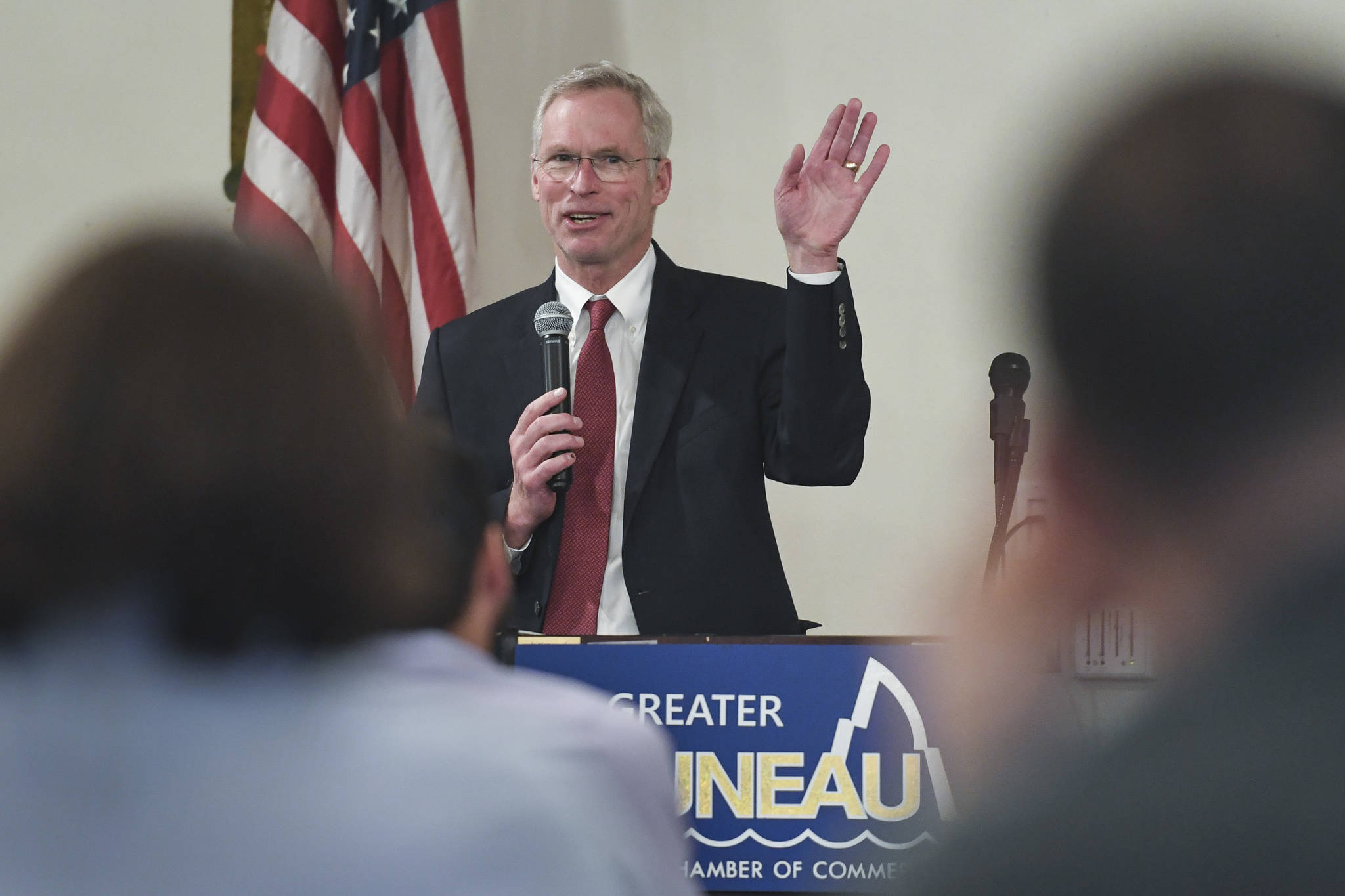Top University of Alaska administrators, including President Jim Johnsen, will be subject to mandatory furloughs to help address budget issues, the system announced Wednesday.
The furloughs were put in place by Johnsen and will affect 166 people, including executives, senior administrators and faculty administrative leaders, the system said.
In an interview with the Empire, Johnsen said the number of furloughs at the University of Alaska Southeast was, “not a big number.”
The move was expected to save the university system $554,000 for the year, the system said in a statement. Asked if the amount would make much of a difference amidst a global pandemic, Johnsen said, “I think it does symbolically. It makes a difference to the people who got the pay cut.”
Johnsen said while many UA employees would be asked to take more time off, many, including himself, would continue to work the same number of hours.
“It is important that each of us do all that we can to help mitigate the financial impacts of COVID-19, the reduction in state support, declining enrollment and other factors,” Johnsen said in a statement. He noted that students have had to transition to taking classes remotely. “Now it is our turn. As leaders we must do our part.”
Furloughs will range in length from eight days for senior administrators and faculty administrative leaders to 10 days for provosts, vice presidents and chief officers and executives including Johnsen and chancellors, according to release from UA. The furloughs are to take place during the upcoming fiscal year.
Johnsen said additional cost-cutting measures will be considered. The university system said the last executive furloughs were in 2016.
But there is money coming from the federal government, Johnsen said, with a total of $7.9 million expected for the system as a whole. That money will be split among the three universities, Johnsen said, using formulas based on student numbers.
The University of Alaska Anchorage will receive the largest portion of the funds, Johnsen said, followed by the University of Alaska Fairbanks and the UAS.
Half the funds, roughly $3.9 million would divided and distributed to the universities where it can be used for COVID-19-related costs. Universities have had to refund students for things such as meal plans and housing, which were cut short by the pandemic, Johnsen said, and federal funds would be able to cover those costs.
The other half would go directly to students in the form of a cash payment. Students who qualify will be given a payment through the university, but the amount and allocation method haven’t yet been figured out, according to Johnsen.
Even with the federal money, the system is taking a pretty big hit financially, Johnsen said. The $7.9 million is less than a third of what the university predicts it’s going to lose, according to Johnsen. But students were enrolling for the fall and classes and work at the university had never stopped, he said.
“The university demonstrated really impressive adaptability to move to online,” Johnsen said. “We are learning from home, we are working from home. We’ve also contributed a huge amount (to the pandemic). Our epidemiologists are supporting the state, our economists are supporting the state. We are here to serve.”
• Contact reporter Peter Segall at psegall@juneauempire.com. Follow him on Twitter at @SegallJnoEmpire.

